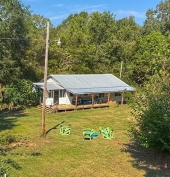




Kelowna, BC
Zone 5




Seed the Mind, Harvest Ideas.
http://farmwhisperer.com
 1
1




The ultimate goal of farming is not the growing of crops, but the cultivation and perfection of human beings. - Masanobu Fukuoka
 1
1




Brenda
Bloom where you are planted.
http://restfultrailsfoodforestgarden.blogspot.com/




Idle dreamer




Our projects:
in Portugal, sheltered terraces facing eastwards, high water table, uphill original forest of pines, oaks and chestnuts. 2000m2
in Iceland: converted flat lawn, compacted poor soil, cold, windy, humid climate, cold, short summer. 50m2





 1
1




Benjamin Burchall wrote:Matt,
Ask yourself why you need to tell people you will be doing polyculture. I don't think it is necessary to tell people that. It may only serve to hinder you. I would simply get my farm going and produce food. If you do that, you'll be demonstrating what you do. People will be more convinced by what they see than what you tell them. If you are producing delicious healthy edibles, they won't care if they are polyculture or monocropped except for the few who are already sold on polyculture. Go for it!
"To oppose something is to maintain it" -- Ursula LeGuin




There are no experts, Just people with more experience.
 1
1




At the same time, putting that word out there puts it in the mind of your customers. Now you have an opportunity to educate them! Don't we want people to know why polycultures are better?





Kelowna, BC
Zone 5








 Luck luck!
Luck luck! 2
2




The ultimate goal of farming is not the growing of crops, but the cultivation and perfection of human beings. - Masanobu Fukuoka










Paul Cereghino- Ecosystem Guild
Maritime Temperate Coniferous Rainforest - Mild Wet Winter, Dry Summer




Kelowna, BC
Zone 5




Idle dreamer












Matt Baker wrote:I'm really itching to put polyculture and hugelkultur techniques into practice in a SPIN farm business (i.e. farming in suburban yards). But when I tell people I'm going to do 'polyculture' for a market garden business I get worried looks. I know there are so many benefits, known and unknown, about growing food in a polyculture but I worry about the labour efficiency of harvesting when, so it seems, planting stuff in monoculture rows and blocks wins out. Any thoughts on the pros and cons of polyculture vs. organic/monoculture practices in the context of an urban market garden enterprise where income/sq. ft. is the key to profitability?
I'll list off a few things I've thought about.
Polyculture Pros:
- Faster sowing
- Less pest loss
- Better flavour and nutrition
- Fertility grown on site
- Better pollination
- Improved yields
Polyculture Cons
- Slower harvest
- Difficult to calculate income and predict results
- Seed loss/hight up-front seed costs
Organic-Monocrop Pros
- Predictable income
- Established and reproducible techniques/results
- Fast harvest
Organic-Monocrop Cons
- Increases loss of carbon and nitrogen due to tillage
- Increased amounts of compost required






Ask me about food.
How Permies.com Works (lots of useful links)









Brenda Groth wrote:a couple of difficulties I have found in my polycultures..
recognizing the plant that is growing..esp when a lot of plants look very much the same..like cole type crops..
keeping hubby from pulling things thinking they are all weeds..as well as visitors..
 A given stretch of a bed may have multiple kinds of plants, but they will either be segregated so we know this area should be thyme and that should be basil, etc, or very, very distinctive and easy to tell from one another, such as tomatoes and bush beans and carrots
A given stretch of a bed may have multiple kinds of plants, but they will either be segregated so we know this area should be thyme and that should be basil, etc, or very, very distinctive and easy to tell from one another, such as tomatoes and bush beans and carrots 


 1
1








Julia Winter wrote:I've had some inadvertent polyculture, because I've been unable to spend time in my garden (getting ready to move). My strawberries have suffered from sharing their space with dandelions and other plants.
This had me wondering--what sort of polyculture works for strawberries?
The devil haunts a hungry man - Waylon Jennings




Marianne West wrote:i hope it gets easier with time. Right now, half of the time I forget what I put where and am not familiar yet with a lot of the plants I am growing. so, for me, mixed results.... It looks cool to have everything kinda growing all over the place and at least the chickens find lots of things to eat. maybe memory training would help




Julia Winter wrote:I've had some inadvertent polyculture, because I've been unable to spend time in my garden (getting ready to move). My strawberries have suffered from sharing their space with dandelions and other plants.
This had me wondering--what sort of polyculture works for strawberries?
 1
1
















 3
3





Ask me about food.
How Permies.com Works (lots of useful links)

 1
1




Maureen Atsali
Wrong Way Farm - Kenya
 1
1






 1
1















Ask me about food.
How Permies.com Works (lots of useful links)

 3
3




Cultivate abundance for people, plants and wildlife - Growing with Nature




|
I didn't like the taste of tongue and it didn't like the taste of me. I will now try this tiny ad:
The new permaculture playing cards kickstarter is now live!
https://www.kickstarter.com/projects/paulwheaton/garden-cards
|







